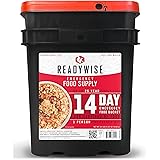Assessment of Community Risks
Understanding Local Hazards
First things first, you need to get a grip on what hazards your community faces. This includes everything from natural disasters, like hurricanes and floods, to man-made issues, such as industrial accidents. I recommend sitting down with a group of locals and mapping out the biggest threats. It’s an eye-opener, I promise.
Once you’ve identified these risks, take a look at how often they occur and their potential impact. Some hazards might be frequent but mild, while others are rare but catastrophic. This information helps in prioritizing which risks need the most attention in your response plan. Trust me, understanding this landscape makes everything else easier.
Lastly, don’t forget to consider vulnerable populations in your area—those who may need extra help during a disaster, like the elderly or disabled. Keep in mind that the more comprehensive your understanding of risks, the better prepared your community will be.
Building a Response Team
Recruiting the Right People
Now that you’ve got a handle on community risks, it’s time to assemble your response dream team. Think about who in your community has skills that can be vital during a disaster—like medical professionals, first responders, or even enthusiastic community members. Getting a diverse group on your side is key.
Don’t just look at official titles; sometimes the best candidates are everyday heroes who have the right mindset and skills. Talk to local businesses, schools, churches, and other community players. Invite them in on the action. People love to support their neighbors, especially in times of need.
Once you’ve assembled your team, hold a meeting. Make introductions, brainstorm ideas, and share your vision. Create a sense of camaraderie; this isn’t just about planning—it’s about building a lasting bond that will flourish through future challenges.
Creating the Disaster Response Framework
Establishing Clear Objectives
With your team in place, the next step is crafting a solid framework for your plan. Start by laying down clear objectives—what you want to achieve when disaster strikes. Do you want to focus on search and rescue, providing shelter, or ensuring medical care? Pinning down these goals will keep everyone on the same page during a crisis.
This is also the time to outline your strategies for communication. In chaotic situations, people need to know exactly where to go and what to do. Establish reliable lines of communication during an emergency—think of text alerts, social media, or a community hotline. You want to be sure that information flows quickly and effectively.
== > What if ... Get a FREE Subscription to PREPARE
Lastly, make sure the framework includes everyone’s roles and responsibilities. Everyone should know their piece of the puzzle. Assign tasks based on individual strengths and ensure there’s redundancy. This way, if someone is unavailable, another team member can step in without problems.
Training and Drills
Preparing Through Practice
Okay, you’ve got your plan and team—now it’s time for the fun part: training! Regular drills are invaluable. They not only help the team become familiar with their roles but also build confidence about what to do in a real situation. Honestly, the more you practice, the smoother things will go when the real deal comes around.
Get Preparedness and Self-Reliance Tips. Subscribe Now!
Make these training sessions informative and engaging. Use scenarios that reflect actual risks your community faces. Maybe simulate a flooding situation one month and a fire evacuation the next. This keeps everyone on their toes and ready for anything. Sometimes, add a twist to these drills to keep it interesting!
Don’t forget to invite the community to participate! Empowering locals to join in on training fosters awareness and cultivates a culture of preparedness. When they know what to do, they’ll feel more secure, and that’s a win for everybody.
Evaluation and Improvement
Reviewing After Action
Once your first drills have wrapped up or, heaven forbid, after an actual disaster response, it’s crucial to sit down and evaluate what went well and what could use some work. Creating an after-action report ensures every lesson learned is documented. Trust me, you don’t want to forget valuable insights gleaned through experience.
Have an open forum where all team members can share feedback without fear of judgment. This level of transparency reinforces the team’s bond and allows for constructive critiques that can lead to future improvements. No plan is perfect, and that’s okay. The key is continual enhancement.
Lastly, take the time to update your plan. New risks may arise, or community dynamics may change. Keep your plan as a living document that evolves with your community. Remember, staying prepared is about being proactive rather than reactive!
Frequently Asked Questions
1. Why is it important to assess community risks?
Assessing community risks helps to prioritize response efforts and resources. By knowing what hazards are prevalent, you can tailor your plan to effectively address those specific needs.
2. Who should be included in the response team?
Your response team should include individuals with diverse skills and backgrounds. Look for locals with expertise in medical, emergency services, and community organizing, as well as enthusiastic volunteers.
3. What kinds of drills should we conduct?
Conduct drills that reflect the risks you might actually face. Depending on your area, this could include earthquake evacuations, flood response, or other disaster scenarios that are relevant to your community.
4. How often should training sessions be held?
It’s a good idea to hold training sessions regularly, such as once a month or every few months. However, keep these flexible depending on your community’s needs and the availability of team members.
5. How can we ensure our plan remains effective?
Continually review and update your disaster response plan. Use feedback from drills and actual responses to make necessary changes, and keep engaging the community to stay informed on their concerns.






